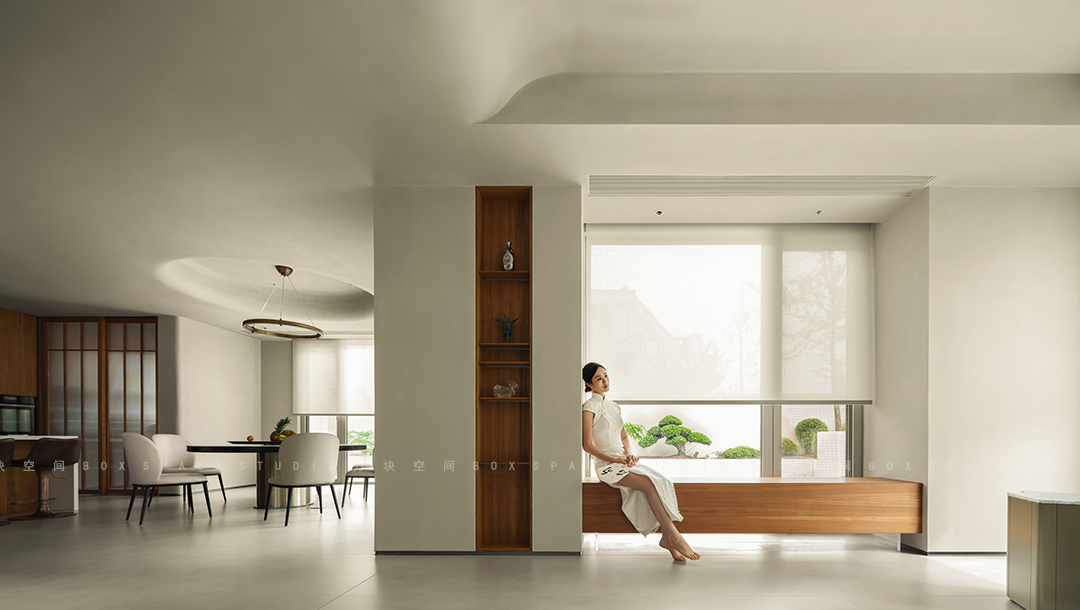Calvià Running Track Niu Arquitectura
2013-04-08 00:00
Text description provided by the architects. Spatial Distribution
Calvià跑道的项目包括一条跑道、一座带看台的服务大楼、一个停车场、一个通道和一个外部交叉训练线路。主楼设有必要的项目,批准在国内和国际上举办比赛的设施。
The project for the Calvià Running Track consists of a track, a services building with stands, a parking area, an access area, and an external cross-training circuit. The main building houses the necessary program to approve the facility for conducting competitions nationally and internationally.
该项目建议作为一个线性建筑,有一个均匀的截面和长度类似于家的伸展。室内计划是在地下室(更衣室、多用途室、医务室)上按线性顺序安排的,专供运动员使用。这一系列服务介于接入循环(也是线性的和平行于家乡的范围)和覆盖的培训区域之间。训练区是一个巨大的,高的空间,8车道宽,连接到健身房和储存室的训练材料。这个训练区域是由街道上的两个接入点划定的,作为外部和看台之间的桥梁。在这些过境空间,提供出入控制、酒吧-自助餐厅、新闻室、公共厕所和运动员进入禁区的通道。在线性地下室,包括更衣室和服务是看台,适合900个座位。
The project is proposed as a linear building, with a uniform section and a length similar to the home stretch. The interior program is organized in a linear sequence of services on the basement level (locker rooms, multipurpose room, infirmary) to be used exclusively by athletes. This sequence of services lies between the access circulation, also linear and parallel to the home stretch, and the covered training area. The training area is a great, tall space, 8 lanes wide, connected to the gym and to the storage room for training material. This training zone is delimited by the two access points from the street, that act as bridges between the exterior and the stands. In these transit spaces, access controls, bar-cafeteria, press room, public restrooms and access to the restricted area for athletes are provided. Over the linear basement that contains the locker rooms and services are the stands, suitable for 900 seats.
这座建筑的顶部是由占主导地位的主展位完成的。基底层被掩埋在轨道沉降所产生的地形之下。这实现了一种更自然的适应由此产生的地形,并减少了环境影响的挖掘需要解决整个运行轨道。主通道来自两个不同的位置,都位于主立面上。
The top of the building is finished with the covered stands that dominate the home stretch. The basement level is buried under the resulting topography yielded by the settlement of the track. This achieves a more natural adaptation to the resulting topography, in addition to diminishing the environmental impact of the excavation needed to settle the entire running track. The main access is from two different locations, both on the main facade.
Structural characteristics
该建筑采用钢筋混凝土预制结构体系,结构间距为6米。该系统解决了挡土墙、立柱、石板、立柱等问题。屋顶是由层合木梁建造的,截面约1200×115毫米,顶部有一个甲板结构。屋顶底部,在入口处和看台的覆盖点,覆盖在多孔聚碳酸酯片上,悬挂在适当的剖面上。在整个建筑物的其余部分,屋顶还有其他特点:在有盖的训练区和自助餐厅,屋顶采用波纹、漆漆、穿孔的金属板材,里面有矿棉,以增强吸声能力;在其他封闭区域,屋顶由矿化的木板制成,以提高吸声能力;在公共流通领域,屋顶是由瓦楞纸,漆,穿孔金属制成。
The building is designed with a prefabricated structural system of reinforced concrete, with a structural spacing of 6 meters on axis. This system solves the retaining walls, columns, slabs and stands. The roof is constructed from laminated wood beams, approximately 1200 x 115 mm in section, covered by a deck structure on top. The bottom of the roof, at the covered points of entrance and stands, is clad in cellular polycarbonate sheets, hung from the appropriate profiles. Throughout the rest of the building, the roof has other characteristics: at the covered training area and the cafeteria, the roof is made of corrugated, lacquered, perforated sheet metal with mineral wool inside to enhance acoustic absorption; in the rest of the enclosed areas the roof is made of mineralized wood panels to improve acoustic absorption; in the public circulation areas the roof is made of corrugated, lacquered, perforated sheet metal.
屋顶的底部聚碳酸酯覆盖层仅用于覆盖运行轨道和接入点的屋顶的前部。这种材料也使用在后面的正面,从而成为一个连续的元素,通过内部的建筑物。多孔聚碳酸酯构成主正面的外壳,通过正面、屋顶和屋顶边缘形成连续的表皮。主立面和侧立面都覆盖着金属板材“部署”系统。该材料为不锈钢,可确保其对建筑物所在地区附近的海洋环境具有良好的抵抗力。
The bottom polycarbonate cladding of the roof is used only on the front of the roof that covers the running track and the points of access. This material is also used on the back facade, thus becoming a continuous element that goes through the interior of the building. The cellular polycarbonate makes up the envelope of the main facade, generating a continuous skin through the facade, the roof, and the roof edge. The main facade, as well as the side facades, are covered with a sheet metal ‘deployé’ system. The material is stainless steel, which ensures its good resistance to the marine environment near the area where the building is located.
 举报
举报
别默默的看了,快登录帮我评论一下吧!:)
注册
登录
更多评论
相关文章
-

描边风设计中,最容易犯的8种问题分析
2018年走过了四分之一,LOGO设计趋势也清晰了LOGO设计
-

描边风设计中,最容易犯的8种问题分析
2018年走过了四分之一,LOGO设计趋势也清晰了LOGO设计
-

描边风设计中,最容易犯的8种问题分析
2018年走过了四分之一,LOGO设计趋势也清晰了LOGO设计




































































































